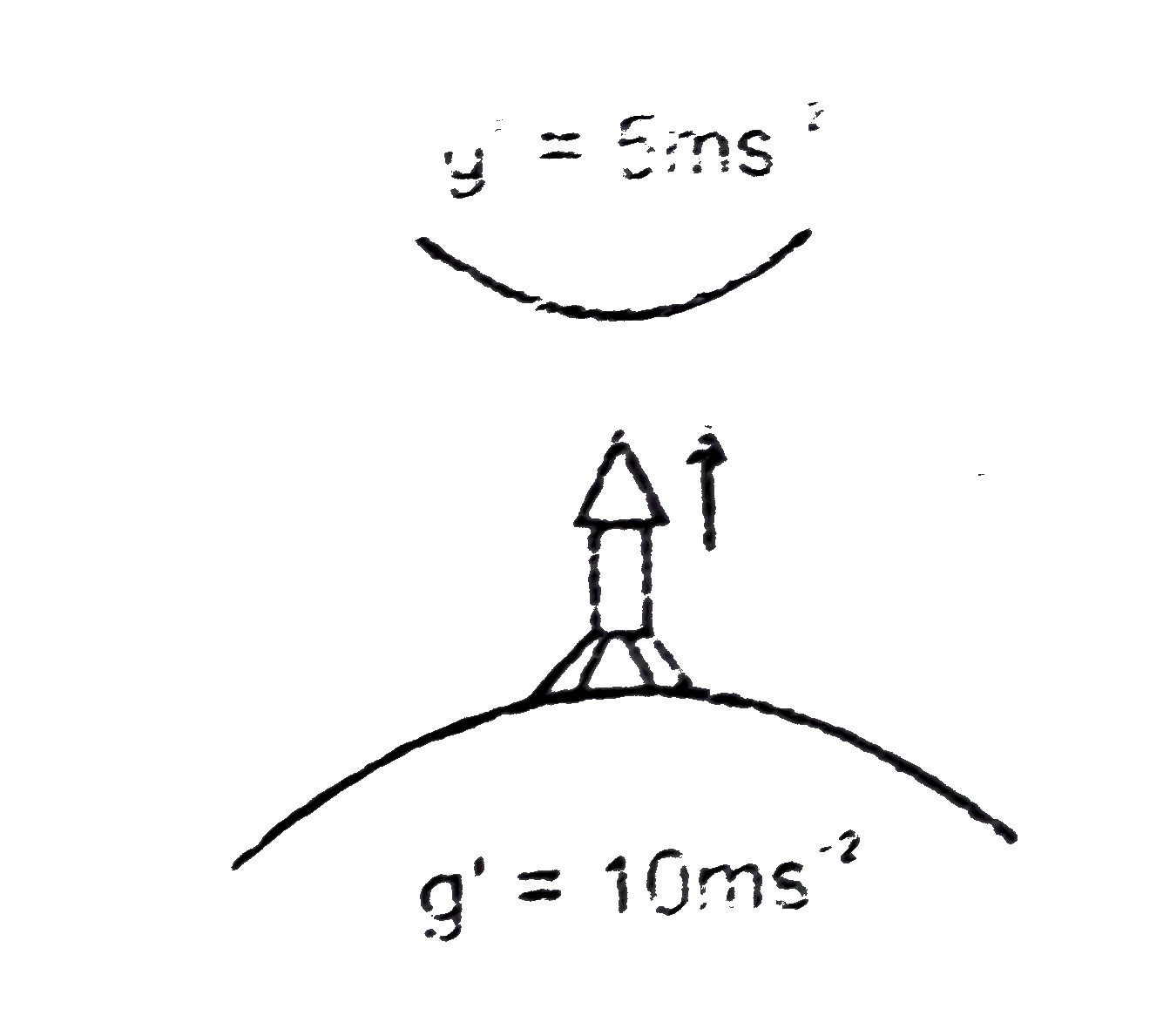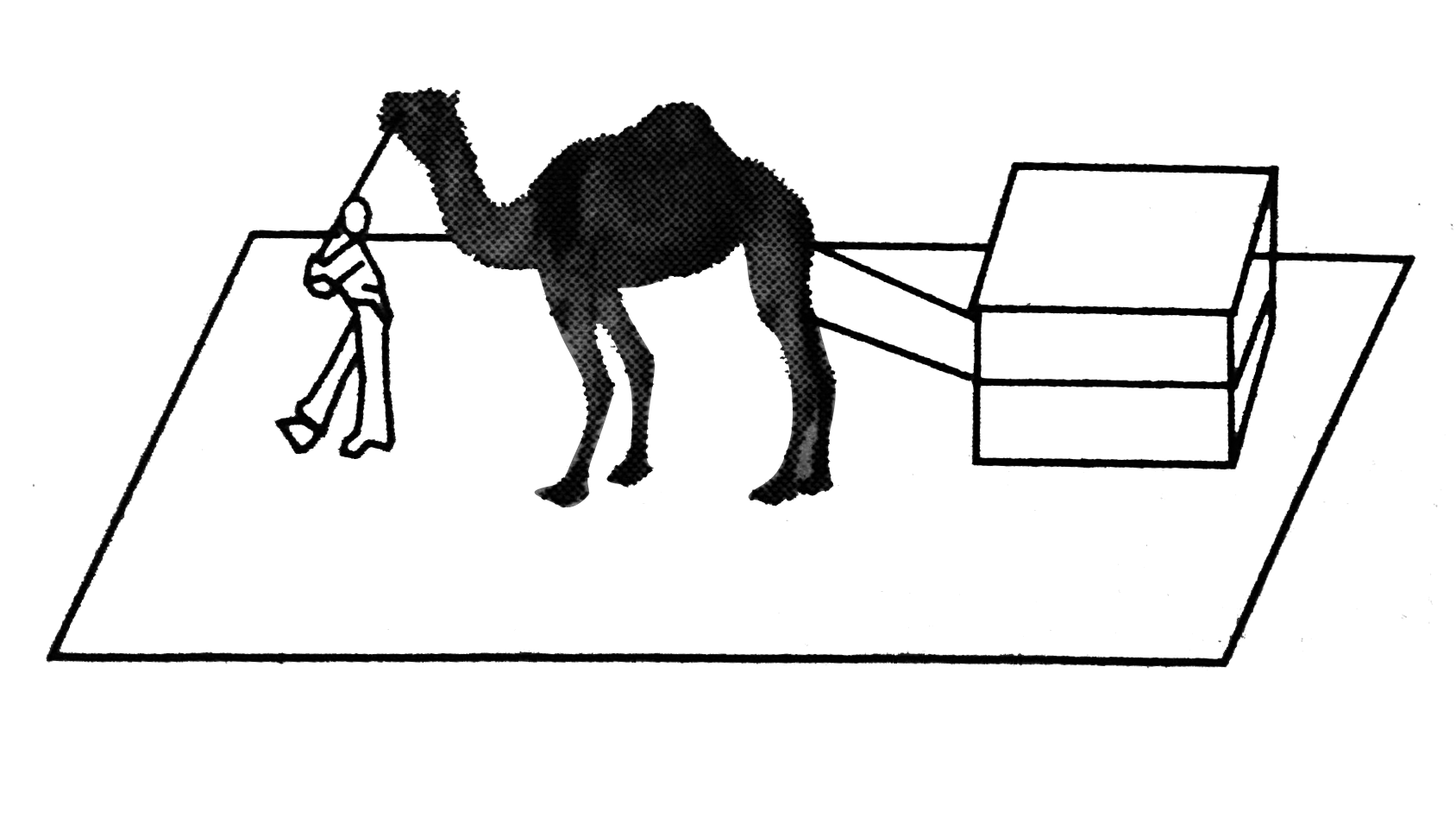An astronaut accidentally gets separateed out of his small spaceship accelerating in inter-stellar space at a constant rate of 50ms−2. What is the acceleration of the astronaut the instant after he is outside the spaceship? (Assume that there are no nearby stars to exert gravitational force on him.)
To solve the problem, we need to analyze the situation of the astronaut as he separates from the spaceship.
1. Understanding the Situation:
The astronaut is initially inside a spaceship that is accelerating at a rate of 50m/s2. When he separates from the spaceship, we need to determine what happens to his acceleration.
2. Identifying Forces:
The problem states that there are no nearby stars to exert a gravitational force on the astronaut. Additionally, the force exerted by the spaceship on the astronaut becomes negligible once he is outside the spaceship.
3. Applying Newton's Second Law:
According to Newton's second law, the net force acting on an object is equal to the mass of the object multiplied by its acceleration (F=ma). If the net force acting on the astronaut is zero, then his acceleration must also be zero.
4. Conclusion:
Since the astronaut is no longer influenced by the spaceship's acceleration (as he is now outside of it) and there are no other forces acting on him, the net force is zero. Therefore, the acceleration of the astronaut at the instant after he is outside the spaceship is:
a=0m/s2
Final Answer:
The acceleration of the astronaut the instant after he is outside the spaceship is 0m/s2.
---
The astronaut is initially inside a spaceship that is accelerating at a rate of 50m/s2. When he separates from the spaceship, we need to determine what happens to his acceleration.
The problem states that there are no nearby stars to exert a gravitational force on the astronaut. Additionally, the force exerted by the spaceship on the astronaut becomes negligible once he is outside the spaceship.
According to Newton's second law, the net force acting on an object is equal to the mass of the object multiplied by its acceleration (F=ma). If the net force acting on the astronaut is zero, then his acceleration must also be zero.
Since the astronaut is no longer influenced by the spaceship's acceleration (as he is now outside of it) and there are no other forces acting on him, the net force is zero. Therefore, the acceleration of the astronaut at the instant after he is outside the spaceship is:
a=0m/s2
The acceleration of the astronaut the instant after he is outside the spaceship is 0m/s2.
Similar Questions
An astronaut accidentally gets separated out his small spaceship accelerating in interstellar space at a constant rate of 100ms−2 . What is the acceleration of the astronaut the instant after he is outside the spaceship? (Assume that there are no nearby stars to exert gravitional force on him)
View SolutionAn astronaut accidentally gets separated out his small spaceship accelerating in interstellar space at a constant rate of 100ms−2 . What is the acceleration of the astronaut the instant after he is outside the spaceship? (Assume that there are no nearby stars to exert gravitional force on him)
View Solution
Knowledge Check
An astronaut accidentally gets separated out his small spaceship accelerating in interstellar space at a constant rate of 100ms−2 . What is the acceleration of the astronaut the instant after he is outside the spaceship? (Assume that there are no nearby stars to exert gravitional force on him)
AzeroB10ms−2C50ms−2D100ms−2A cyclist is riding with a speed of 27kmh−1. As he approaches a circular turn on the road of radius 80 m, he applies brakes and reduces his speed at the constant rate 0.5ms−2. What is the magnitude and direction of the net acceleration of the cyclist on the circular turn ?
A0.68 m s−2B0.86 m s−2C0.56 m s−2D0.76 m s−2
An astronaut accidentally gets thrown out of his small spaceship accelerating in interstellar space at a constant rate. What is the acceleration of the astronaut, the instant after he is outside the spaceship?
View SolutionSuppose the acceleration due to gravity at earth's surface is 10ms−2 and at the surface of Mars it is 4.0ms−2. A passenger goes from the earth to the mars in a spaceship with a constant velocity. Neglect all other object in sky. Which part of figure best represent the weight (net gravitational force) of the passenger as a function of time?

View SolutionA cylclist is riding with a speed of 27kmh−1. As he approaches a circular turn on the road of radius 80m, he applies brakes and reduces his speed at the constant rate of 0.5ms−2. What is the magnitude and direction of the net acceleration of the cyclist on the circular turn ?
View SolutionIf accleration due to gravity on the surface of earth is 10ms−2 and let acceleration due to gravitational acceleration at surface of another planet of our solar system be 5ms−2 An astronaut weighing 50kg on earth goes to this planet in spaceship with a constant velcity The weight of the astronaut with time of fiight is roughly given by
 .
.
View SolutionRam and Ali have been fast friends since childhood. Ali neglected studies and now has no means to earn money other than a channel whereas Ram has become an engineer. Now both are working in the same factory. Ali uses camel to transport the load within the factory.
 Due to low salary and degradation in health of camel, Ali becomes worried and meets his friend Ram and discusses his problems. Ram collected some data and with some assumptions concluded the following:
Due to low salary and degradation in health of camel, Ali becomes worried and meets his friend Ram and discusses his problems. Ram collected some data and with some assumptions concluded the following:
i. The load used in each trip is 1000kg and has friction coefficient μk=0.1 and μs=0.2.
ii. Mass of camel is 500kg.
iii. Load is accelerated for first 50m with constant acceleration, then it is pulled at a constant speed of 5ms−1 for 2km and at last stopped with constant retardation in 50m.
iv. From biological data, the rate of consumption of energy of camel can be expressed as P=18×103v+104Js−1 where P is the power and v is the velocity of the camel. After calculations on different issues, Ram suggested proper food, speed of camel, etc. to his friend. For the welfare of Ali, Ram wrote a letter to the management to increase his salary.
(Assuming that the camel exerts a horizontal force on the load):
The ratio of the energy consumed by the camel during uniform motion for the two cases when it moves with speed 5ms−1 to the case when it moves with 10ms−1
View SolutionRam and Ali have been fast friends since childhood. Ali neglected studies and now has no means to earn money other than a channel whereas Ram has become an engineer. Now both are working in the same factory. Ali uses camel to transport the load within the factory.
 Due to low salary and degradation in health of camel, Ali becomes worried and meets his friend Ram and discusses his problems. Ram collected some data and with some assumptions concluded the following:
Due to low salary and degradation in health of camel, Ali becomes worried and meets his friend Ram and discusses his problems. Ram collected some data and with some assumptions concluded the following:
i. The load used in each trip is 1000kg and has friction coefficient μk=0.1 and μs=0.2.
ii. Mass of camel is 500kg.
iii. Load is accelerated for first 50m with constant acceleration, then it is pulled at a constant speed of 5ms−1 for 2km and at last stopped with constant retardation in 50m.
iv. From biological data, the rate of consumption of energy of camel can be expressed as P=18×103v+104Js−1 where P is the power and v is the velocity of the camel. After calculations on different issues, Ram suggested proper food, speed of camel, etc. to his friend. For the welfare of Ali, Ram wrote a letter to the management to increase his salary.
(Assuming that the camel exerts a horizontal force on the load):
Sign of work done by the camel on the load during parts of motion, accelerated motion, uniform motion and retarded motion, respectively are
View Solution
